27 Turkish Appetizers for Every Taste Bud
Turkish appetizers, known as meze, represent a vibrant culinary tradition that transforms simple ingredients into extraordinary small plates.
These delightful bite-sized wonders showcase the rich cultural heritage of regional cooking styles and ingredients.
Seasoned with aromatic spices and prepared with meticulous care, meze reflects the warm hospitality deeply embedded in turkish social gatherings.
Each appetizer tells a story of local traditions, family recipes, and generations of culinary expertise.
The diverse range of flavors demonstrates remarkable creativity, blending Mediterranean and Middle Eastern influences with distinctive techniques.
Ingredients sourced from fertile landscapes contribute to the remarkable complexity of these small yet powerful dishes.
Passionate food lovers find themselves captivated by the intricate balance of textures and tastes that define these culinary gems.
Here are 28 unique turkish appetizers that will transport you to the heart of turkish cuisine:
Unique Turkish Appetizers for Every Occasion
Turkish meze sets the tone for vibrant meals with bite-sized treats, grilled veggies, yogurt dips, and savory pastries all made for sharing and conversation.
Kalamar Tava
Kalamar tava are crispy, golden-brown squid rings beloved in Turkish cuisine as a popular meze appetizer.
Mediterranean fishermen perfected this simple seafood dish by carefully cleaning and cutting fresh squid into thick rings.
Salt, flour, and baking soda create a light, crunchy batter that transforms the seafood into a irresistible snack.
Cooks soak the squid in milk before dredging it in seasoned flour mixture to ensure tender texture.
Hot oil quickly fries the rings until they reach a perfect golden-brown color and crisp exterior.
Herbs or red pepper flakes can enhance the squid's natural flavor for added complexity.
Tangy tartar-style sauce accompanies the fried rings, providing a zesty complement to the crisp seafood.
Fresh lemon wedges offer a bright, citrusy finish that cuts through the richness of the fried dish.
Cantk Pidesi
Cantk pidesi are savory Turkish flatbreads originating in Bursa, featuring a distinctive folded dough stuffed with seasoned minced meat and vegetables.
Regional bakers craft these rustic breads using traditional flour, water, yeast, and salt dough techniques.
Minced beef or lamb forms the primary filling, complemented by chopped onions, tomatoes, and green peppers.
Paprika and black pepper add robust flavor to the meat mixture.
Skilled artisans carefully spread the spiced meat across rolled dough, folding it into a half-moon shape or leaving portions of filling exposed.
Each bread reflects Bursa's culinary heritage and demonstrates the region's expertise in creating hearty, flavorful street foods.
Bakeries and street vendors throughout northwestern Turkey continue this generations-old bread-making tradition.
Kokorec
Kokorec embodies a daring street food delicacy crafted from lamb intestines skillfully wrapped around seasoned offal and grilled over hot charcoal.
Turkish vendors meticulously clean and prepare these organs before threading them onto iron skewers for precise roasting.
Street-side grills transform these ingredients into a crispy, spicy street snack popular throughout Turkiye.
Greek cuisine offers a similar dish with slight variations in organ selection and preparation methods.
Regional spices like oregano, cumin, and chili flakes enhance its robust flavor profile.
Bread often accompanies this protein-rich meal, creating a satisfying handheld experience.
Hummus
Hummus is a creamy Middle Eastern spread packed with protein and flavor, blending mashed chickpeas, tahini, lemon juice, and garlic into a smooth, nutritious dip.
Ancient Egyptian records first documented this popular dish in the 13th century, revealing its deep culinary roots.
Mediterranean and Middle Eastern cultures embrace hummus as a versatile staple in their cuisine.
Restaurants and home kitchens worldwide serve it as an appetizer or sandwich filling, often garnished with a drizzle of olive oil.
Fresh vegetables and warm pita bread complement its tangy taste perfectly.
Nutritionists praise its high protein and fiber content, making it a healthy snack option.
Global food lovers have embraced this simple yet flavorful spread across continents.
Its widespread popularity continues to grow, transcending cultural and geographical boundaries.
Cop Sis
Cop sis emerges as a resourceful Turkish kebab crafted from lamb trimmings and fat, transforming meat scraps into a flavorful street food delicacy from Turkey's Aegean region.
Regional butchers traditionally marinate these meat pieces in olive oil, oregano, and black pepper, creating a rich and aromatic profile.
Small wooden skewers hold the seasoned meat fragments, which are quickly roasted to develop a crispy exterior and tender interior.
Garlic and tomatoes enhance the meat's natural flavors, adding depth to each bite.
Restaurant and street vendors prepare cop sis as a quick, affordable protein option that wastes nothing from the butchering process.
Interestingly, its provocative name "garbage shish" might reference either the tiny skewers or the use of meat trimmings.
Local diners appreciate this dish as a testament to Turkish culinary resourcefulness.
Minimal ingredients and simple preparation make cop sis a beloved street food across the Aegean region.
Pacanga Boregi
Pacanga boregi is a crispy Turkish pastry stuffed with savory pastirma and kasar cheese, representing a beloved Sephardic Jewish specialty from Istanbul and Anatolia.
Rectangular strips of yufka or phyllo dough wrap around salted, aged beef and melted cheese, creating a rich flavor profile.
Peppers and tomatoes often enhance the filling's complexity.
Traditionally deep-fried until golden brown, the borek offers a satisfying crunch with each bite.
Skilled cooks carefully roll and cut the dough before frying to achieve perfect texture.
Restaurants and home kitchens across Turkey serve this appetizer hot and fresh.
Istanbul street vendors and home cooks consider pacanga boregi a classic snack.
Ekmek Ve Zeytinyag
Pane e olio embodies Italy's culinary simplicity, transforming two humble ingredients into a sublime gastronomic experience.
Rustic bread like ciabatta or focaccia serves as the perfect canvas for premium extra virgin olive oil from Tuscany or Puglia.
Cold-pressed EVOO drizzled over fresh or lightly toasted bread slices creates a sensory delight that celebrates Mediterranean flavors.
Regional Italian bread varieties provide a crisp or soft foundation for the rich, grassy olive oil.
Salt and sometimes herbs like oregano or basil might enhance the basic combination.
Olive oil quality determines the dish's overall taste and complexity.
Bread dipping becomes an art form that connects generations through shared culinary traditions.
Haydari
Haydari is a creamy Turkish meze dip celebrated for its bold, tangy flavor and smooth yogurt base.
Turkish cuisine crafts this popular appetizer by straining yogurt to create a thick, rich consistency.
Garlic and fresh herbs like dill, mint, and basil infuse the dip with aromatic complexity.
Paprika adds a subtle warmth and vibrant color to the white yogurt mixture.
Traditional pairings include warm pita bread and fresh vegetables for dipping.
Small gatherings and family meals often feature this versatile starter.
Restaurants across Turkey consider haydari a staple meze dish that highlights yogurt's creamy potential.
Ksr
Ksr is a zesty Turkish salad bursting with Mediterranean flavors and combining thin bulgur wheat with fresh herbs and tangy dressing.
Red pepper flakes add a spicy kick to this traditional dish popular across Turkiye.
Northwestern regions prefer lemon juice, while southeastern areas favor pomegranate molasses as the signature dressing.
Tomatoes, mint, garlic, and parsley create a vibrant mix of ingredients that complement each other perfectly.
Barbecued meat dishes often feature ksr as a complementary side.
Buffet tables and meze spreads frequently showcase this versatile salad.
Chefs prepare ksr to be served cold or at room temperature.
Its simple preparation and bold taste make ksr a staple in Turkish cuisine.
Cig Kofte
Cig kofte are spicy Turkish morsels originating from southeastern Anatolia, traditionally crafted with raw meat but now predominantly prepared as a vegetarian delicacy with bulgur wheat and ground walnuts.
Kurdish and Turkish communities popularized this hand-rolled street food known for its intense, complex spice blend including red pepper, cumin, and regional herbs.
Bulgur wheat provides a robust texture that mimics ground meat's consistency, while walnuts add richness and depth to the mixture.
Restaurant and street vendors carefully knead the ingredients by hand, creating small torpedo-shaped bites with a striking reddish color.
Diners typically enjoy cig kofte wrapped in lettuce leaves or as a standalone appetizer.
Icli Kofte
Icli kofte are traditional Turkish deep-fried meatballs with a crispy bulgur wheat shell and rich meat filling.
Originating from Middle Eastern cuisine, these savory snacks blend wheat, potatoes, and semolina into a smooth exterior that cradles seasoned ground lamb or beef.
Nuts like walnuts, pine nuts, or pistachios add texture and depth to the inner mixture.
Skilled cooks carefully craft each ball by hand, ensuring a perfect balance of ingredients.
Icli kofte serve as popular street food and party appetizers throughout the country.
Restaurants and home kitchens alike prepare these protein-packed morsels as a beloved comfort food.
Diners enjoy them hot, often accompanied by yogurt or fresh salad.
Cack
Cacık is a tangy Turkish yogurt-based dip beloved for its cool, creamy texture and bright Mediterranean flavors.
Turkish cuisine celebrates this refreshing side dish as a versatile accompaniment to grilled meats, kebabs, and mezze platters.
Strained yogurt serves as the creamy foundation, blended smoothly with finely chopped cucumbers and minced garlic.
Fresh herbs like dill and mint add vibrant complexity to the mixture.
Olive oil drizzled on top enhances the dip's richness and depth.
Traditional recipes sometimes include additional seasonings such as lemon juice, vinegar, oregano, thyme, sumac, and paprika.
Cooks across Turkey prepare cacık as a summer staple, serving it chilled to complement hot dishes.
Sigara Boregi
Sigara boregi are crispy Turkish pastry rolls bursting with savory cheese and parsley fillings that transform simple ingredients into an irresistible street food snack.
Cylindrical in shape, these deep-fried treats originate from traditional Turkish cuisine and feature thin yufka or phyllo dough wrapped around a creamy cheese mixture.
Triangular dough pieces are carefully filled with crumbled white cheese, chopped fresh parsley, and occasionally eggs before being tightly rolled into slim cigarette-like shapes.
Skilled cooks fold and seal the edges to prevent filling from leaking during frying.
Each roll becomes golden brown and crunchy when immersed in hot oil, creating a perfect contrast between the crisp exterior and smooth interior.
Street vendors and home kitchens across Turkey prepare these popular appetizers for quick snacks or mezze platters.
Restaurants often serve sigara boregi as a delightful starter alongside other small plates and beverages.
Labneh
Labneh is a luxurious Middle Eastern strained yogurt cheese with an irresistibly creamy texture and mild tangy flavor.
Traditional preparation involves mixing full-fat plain yogurt with salt and straining it for twelve to twenty-four hours, creating a thick cheese-like product.
Originating in the Middle East, this versatile dairy delicacy spans multiple countries including Greece, Turkey, and Cyprus.
Cow milk serves as the primary base, though goat yogurt is also common in some regions.
Levantine cultures frequently serve labneh as part of mezze platters alongside flatbreads and small dishes.
Culinary applications range from simple garnishes with olive oil or mint to serving as a smooth spread on bread or bagels.
Chefs often incorporate labneh as a complementary condiment in various meat and vegetable recipes.
Kabak Mucveri
Kabak mucveri are crispy Turkish vegetable pancakes packed with zucchini and aromatic herbs that transform simple ingredients into a beloved street food snack.
Grated zucchini forms the core of these savory fritters, blended seamlessly with flour and eggs for a perfect texture.
White Turkish cheese adds rich depth to the mixture, while fresh herbs like parsley, dill, or mint provide bright, complex flavors.
Onions contribute a subtle sharpness that balances the vegetable's mild taste.
Cooks pan-fry the fritters until they reach a golden-brown crispness, creating an irresistible exterior with a tender interior.
Yogurt sauce traditionally accompanies these fritters, offering a cool, tangy complement to the warm, spiced pancakes.
Street vendors and home kitchens across Turkey prepare kabak mucveri as a quick, satisfying meal or appetizer.
Families often enjoy these fritters during summer when zucchini is abundant and fresh.
Patlcan Dolmasi
Patlcan dolmasi are savory Turkish stuffed eggplants celebrated for their complex flavor profile and regional significance across Anatolian cuisine.
Pomegranate molasses and mint frequently enhance the dish's distinctive taste.
Dried eggplants create a unique texture when carefully blanched and prepared.
Skilled home cooks meticulously stuff each eggplant with a carefully balanced mixture of ingredients.
Traditional preparation methods reflect generations of culinary expertise.
Restaurants and home kitchens alike feature this beloved meze dish.
Mediterranean and Middle Eastern influences contribute to its rich gastronomic heritage.
Saksuka
Saksuka is a zesty vegetable medley from Turkish cuisine that highlights eggplants and zucchinis as its star ingredients.
Mediterranean cooks carefully fry these vegetables in olive oil until golden and tender.
Tomato sauce, garlic, and green peppers add robust flavor complexity to the dish.
Restaurants often serve saksuka as a cold meze alongside grilled meats and fresh bread.
Home kitchens prepare this simple yet delicious vegetable mix as a versatile side dish.
Green peppers contribute a mild spiciness that balances the vegetables' rich texture.
Olive oil helps create a smooth, glossy appearance for the vegetables.
Arnavut Cigeri
Arnavut cigeri are crispy, pan-fried lamb liver chunks originating from Turkish cuisine during Ottoman rule in Albania.
Street vendors and restaurants across Turkey serve this popular meze (appetizer) as a savory protein dish.
Small pieces of liver get quickly fried until golden brown and slightly crisp around edges.
Salt, paprika, and sumac provide sharp, tangy seasoning that balances the rich meat flavor.
Restaurants often garnish the plate with raw onion slices and fresh parsley.
Traditional accompaniments include crusty bread and cold ayran (yogurt drink) to complement the intense liver taste.
Midye Tava
Midye tava are crispy, golden-brown mussels deep-fried to perfection and served on wooden skewers, a popular street food snack beloved across Turkey.
Seafood lovers crave these bite-sized delicacies that feature fresh mussels coated in a light, crunchy batter.
Street vendors expertly prepare the dish by dipping mussels in seasoned flour mixture before frying them in hot oil.
Each mussel transforms into a golden, crispy morsel with a tender interior that bursts with oceanic flavor.
Traditional preparation involves using a wide metal cauldron that allows excess oil to drain while cooking.
Regions near coastal areas like Istanbul and Izmir particularly enjoy this quick, savory treat.
Restaurants and street stalls often serve midye tava with lemon wedges and optional spicy sauce.
Mussels are carefully selected and cleaned before being skewered and fried to ensure maximum taste and texture.
Mercimek Kofte
Mercimek kofte are savory vegetarian Turkish patties crafted from boiled red lentils and bulgur wheat blended into a compact, oval-shaped snack.
Red lentils form the protein-rich base of this popular meze dish, creating a smooth texture that binds perfectly with bulgur.
Sauteed onions and tomato paste enhance the patties' robust flavor profile, while cumin adds warm, earthy undertones.
Spicy variations include chili flakes for an extra kick of heat.
Cooks shape the mixture into small, neat ovals by hand, ensuring each bite delivers consistent taste and texture.
Street vendors and family kitchens alike prepare this simple yet satisfying dish that reflects Turkey's rich culinary traditions.
Vegetarians especially enjoy mercimek kofte as a protein-packed alternative to meat-based snacks.
Acl Ezme
Acl ezme is a zesty Turkish salad bursting with fresh Mediterranean flavors that combines chopped raw vegetables and herbs into a tangy side dish.
Raw tomatoes, onions, and green peppers form its vibrant base, finely minced to create a smooth texture.
Garlic and parsley add sharp aromatic notes that complement the vegetables' freshness.
Lemon juice and pomegranate molasses bring bright acidic undertones to the mix.
Olive oil helps blend the ingredients while adding richness to each bite.
Sumac provides a subtle tangy essence that enhances the overall taste profile.
Dried mint contributes a gentle herbal background note to the salad.
Restaurants typically serve acl ezme alongside grilled meats and kebabs as a refreshing accompaniment.
Barbunya Pilaki
Barbunya pilaki are succulent Turkish beans braised in olive oil, representing a classic cold appetizer popular throughout Mediterranean regions.
Mediterranean kitchens celebrate this vegetarian meze with tender borlotti beans slowly simmered in rich tomato sauce.
Olive oil provides a smooth, silky texture that enhances each ingredient's natural flavor.
Parsley adds a fresh, green note that brightens the entire dish.
Cooking requires patience, with beans soaked overnight and gently simmered until perfectly tender.
Nokul
Nokul are Turkish pastry swirls bursting with rich poppy seed filling and a golden-brown exterior that sets them apart from traditional sweet rolls.
Originating in southern Turkey, these delicate pastries blend simple ingredients like flour, salt, sugar, and yeast with a distinctive poppy seed mixture.
Bakers carefully roll the dough to create intricate spiral patterns that showcase the dark, nutty filling.
Each nokul offers a unique blend of soft, slightly sweet bread and earthy poppy seed flavors.
Locals often serve these pastries hot as a breakfast treat or appetizer.
Nokul can be enjoyed plain or paired with tea or coffee.
Small bakeries and home kitchens across southern Turkey continue to preserve this traditional pastry's preparation method.
Kabak Dolmas
Kabak dolmasi are savory Turkish stuffed zucchinis brimming with rich ground meat, rice, and aromatic herbs that showcase Mediterranean culinary traditions.
Zucchinis carefully hollowed out become delicate vessels for a hearty mixture of lamb or beef blended with fragrant onions and tomatoes.
Parsley, salt, and pepper infuse deep flavor into each stuffed vegetable.
Cooks meticulously fill zucchini shells with the seasoned meat and rice mixture before gently cooking them to tender perfection.
Turkish families often prepare this beloved meze dish for gatherings and special meals.
Yogurt serves as a traditional accompaniment, with plain or garlic-infused varieties complementing the robust flavors.
Kabak dolmasi represents a classic example of Mediterranean comfort food that balances nutrition and taste in one satisfying dish.
Fasulye Pilaki
Fasulye pilaki are classic Turkish white bean stews packed with robust Mediterranean flavors and served chilled or at room temperature as a popular meze dish.
Turkish households prepare this nutritious vegetarian recipe by slowly simmering white beans with aromatic vegetables like onions, carrots, and potatoes in generous amounts of olive oil.
Fresh parsley and bright lemon juice provide a zesty finish to the creamy bean mixture, balancing its rich olive oil base.
Sea salt and black pepper enhance the stew's natural earthy undertones.
Authentic versions require careful bean preparation, often soaking dried beans overnight for optimal texture.
Mediterranean cuisine celebrates this simple yet satisfying vegetable-based dish as a staple of shared meals and social gatherings.
Zeytin Salatas
Zeytin salatası are briny olive appetizers from Hatay, Turkey, featuring hand-cracked indigenous green olives prepared with meticulous precision in traditional copper bowls.
Mediterranean cuisine celebrates this simple yet flavorful dish, which combines fresh olives with smooth olive oil and tangy pomegranate syrup.
Turkish families often serve zeytin salatası during breakfast or as a starter before main meals.
Regional cooks carefully select high-quality olives and crack them individually to preserve their natural texture and intense flavor.
Olive selection matters deeply, with green varieties preferred for their robust taste.
Pomegranate syrup adds a sweet-tart dimension that balances the olives' saltiness.
Olive oil provides a rich, smooth foundation for the salad.
Serving temperature and olive preparation technique significantly impact the dish's overall taste experience.
Beyin Salatasi
Beyin salatasi stands out as a unique Turkish delicacy featuring lamb brain as its primary ingredient.
Tender lamb brains are carefully boiled in salted water and vinegar, then cooled and chopped into delicate pieces.
Vibrant tomatoes, zesty lemon juice, briny olives, and fresh parsley complement the soft brain meat.
Generous drizzles of olive oil bind the ingredients together, creating a smooth and rich texture.
Regional Turkish cuisine celebrates this unconventional salad as a protein-packed appetizer.
Mediterranean flavor profiles shine through each carefully prepared bite.
Bold diners appreciate its distinctive combination of ingredients.
Regional culinary traditions showcase this brain salad as a testament to resourceful cooking techniques.
What Is Turkish Meze, and How Is It Served?
Turkish meze is a vibrant assortment of small dishes served as appetizers or shared plates, designed to stimulate the appetite and encourage communal dining.
Meze can include a variety of items such as dips, salads, grilled vegetables, seafood, cheeses, and bite-sized fried snacks.
Typically, meze is enjoyed slowly with friends or family, often accompanied by raki (anise-flavored spirit) or other beverages.
It’s served on multiple small plates, allowing diners to sample a range of flavors and textures in one sitting.
How Are Yogurt and Olive Oil Used in Turkish Appetizers?
Yogurt and olive oil are fundamental ingredients in Turkish appetizers, valued for their flavor, texture, and health benefits:
Yogurt and olive oil create harmonious contrasts and layers of flavor that are signature to Turkish appetizers.

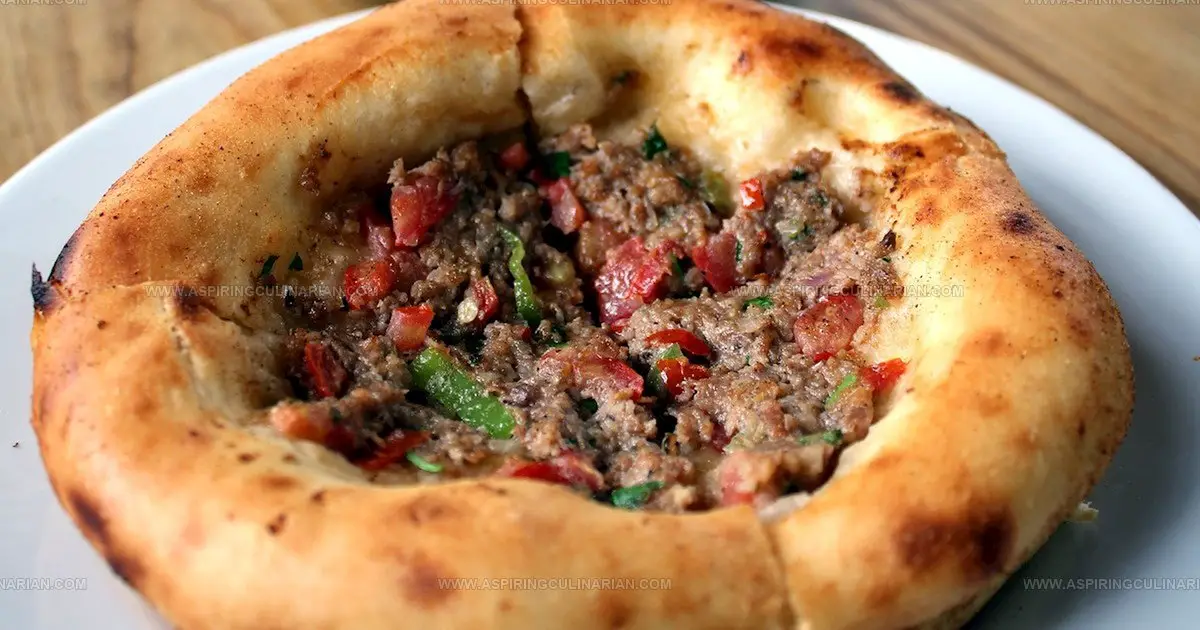
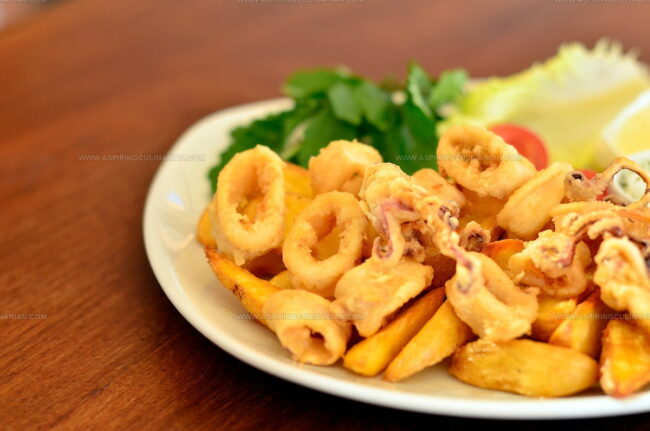
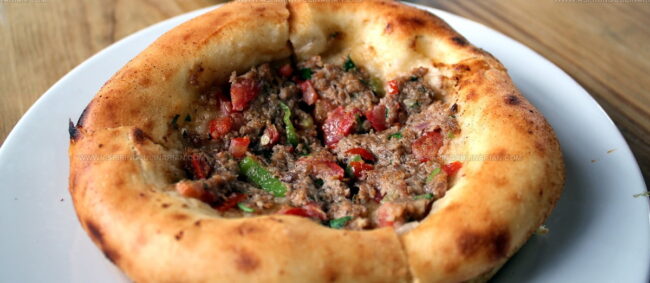
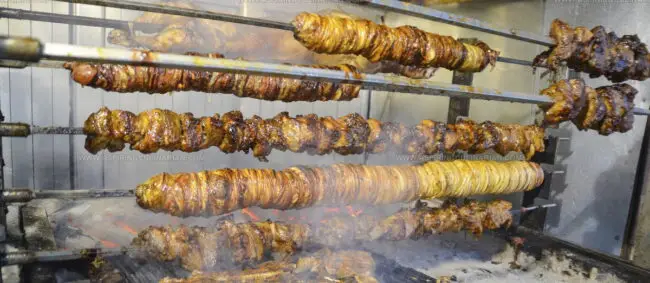
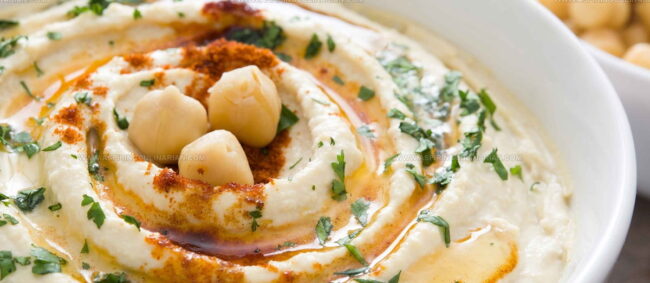
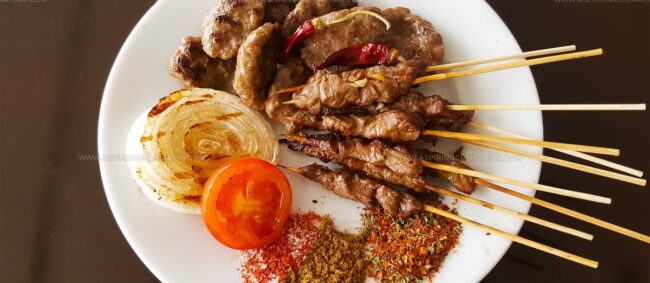
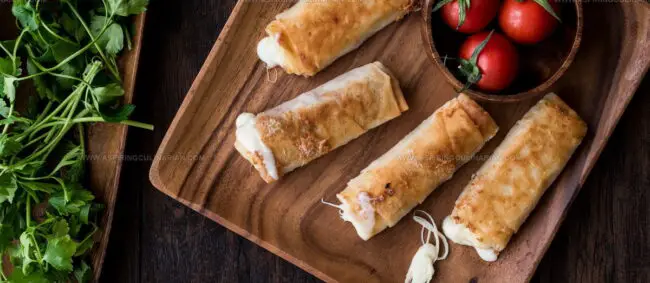
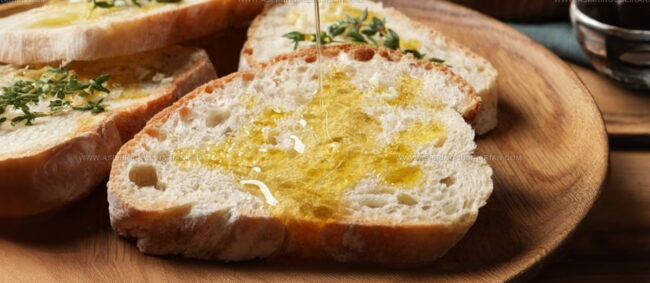
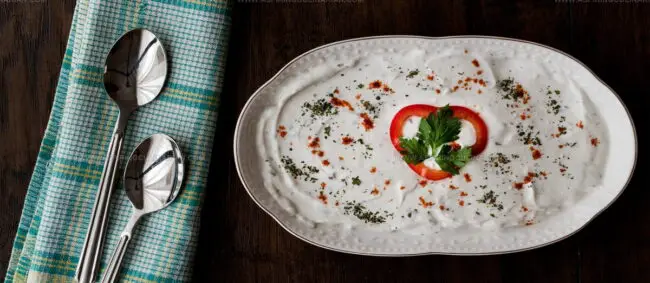
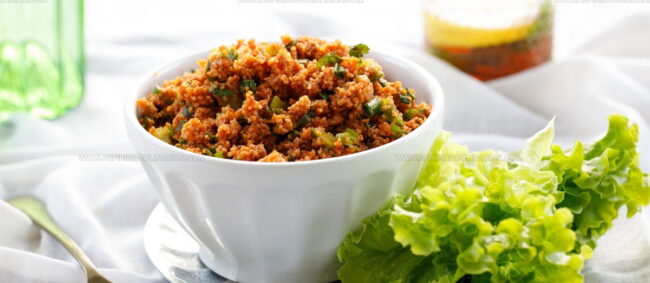
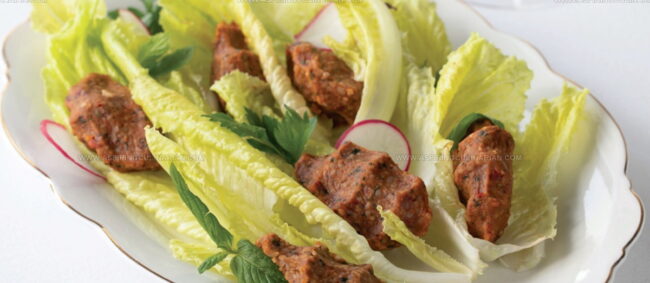
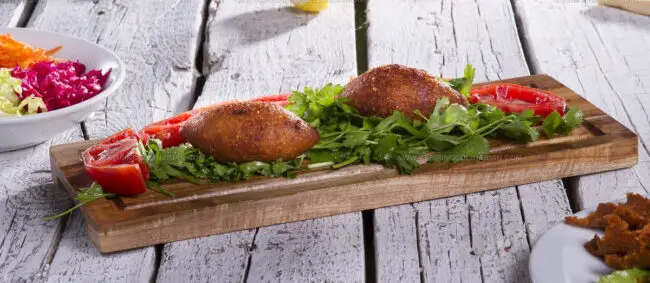
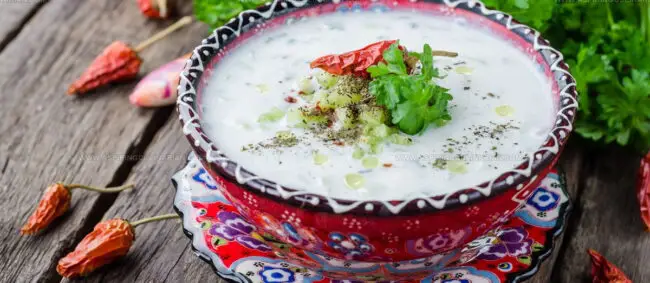
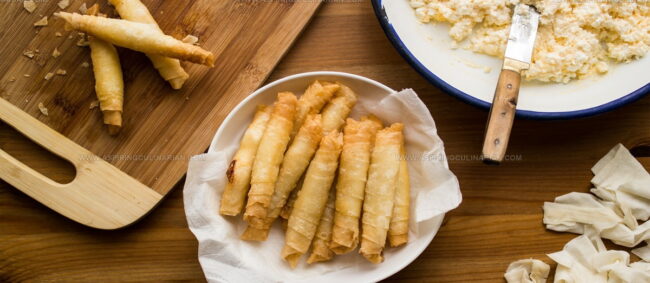
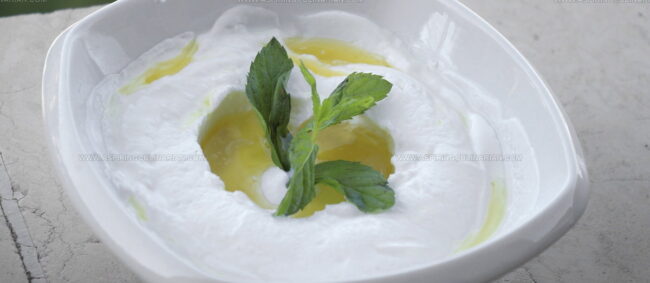
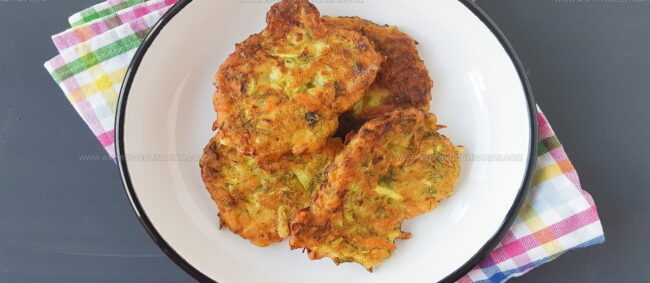
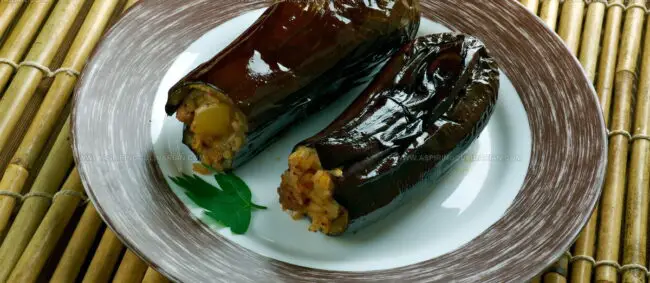
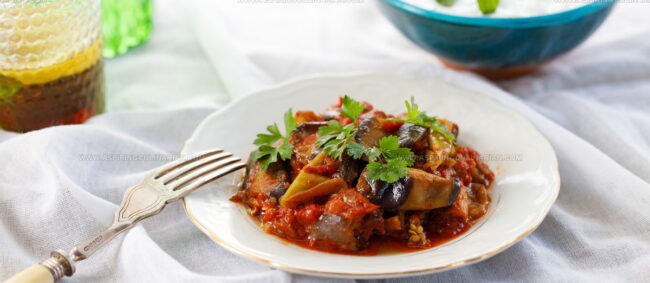
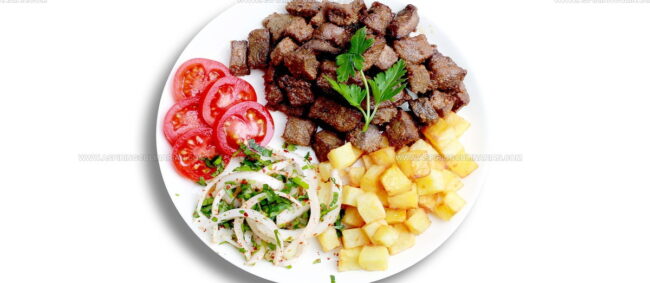
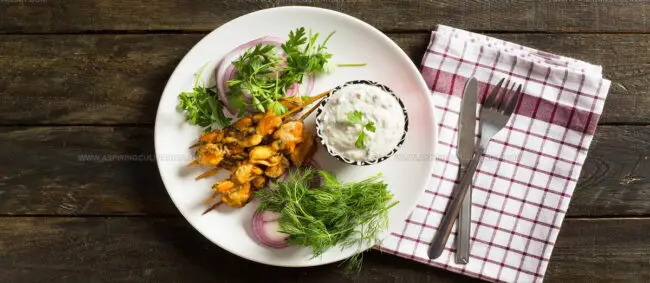
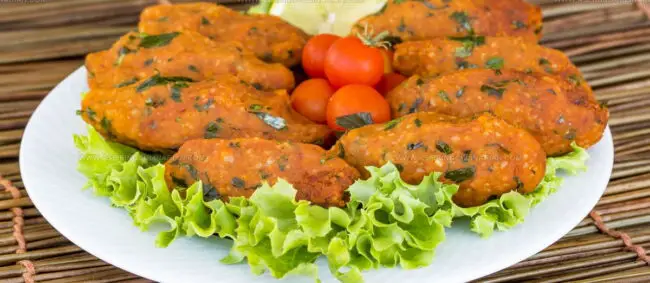
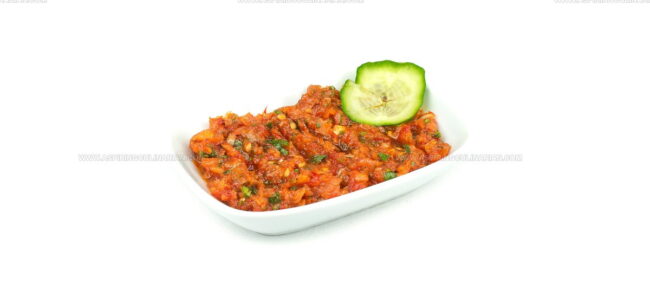
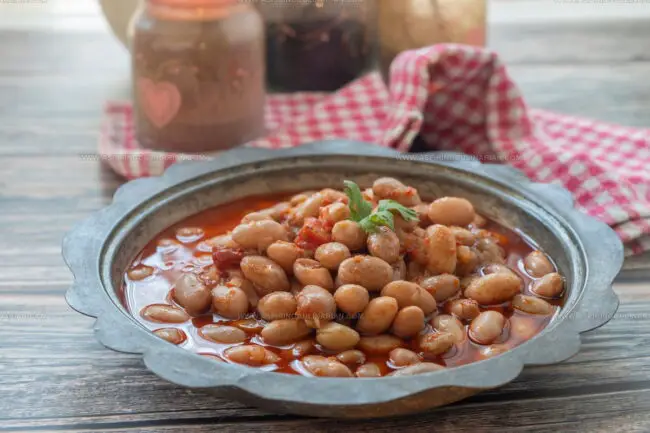
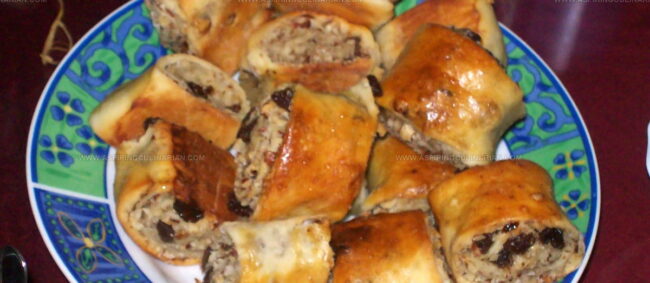
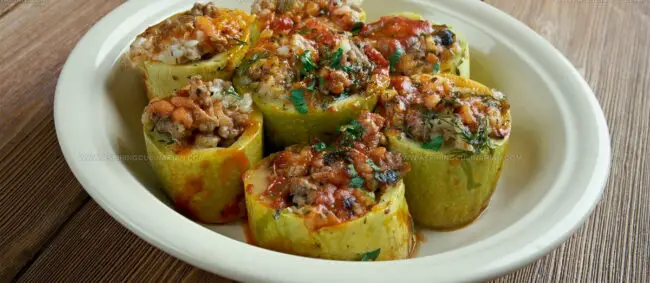
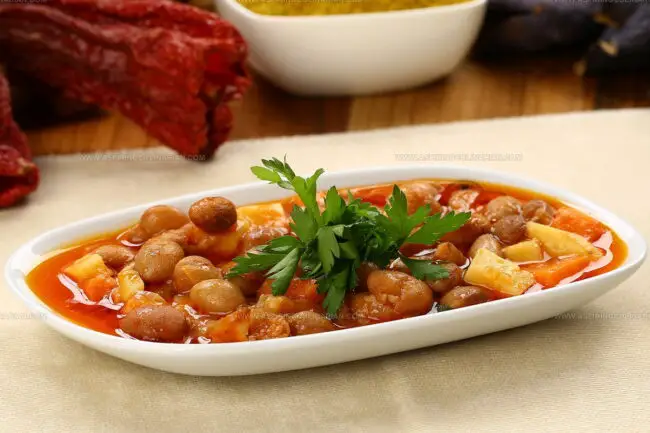
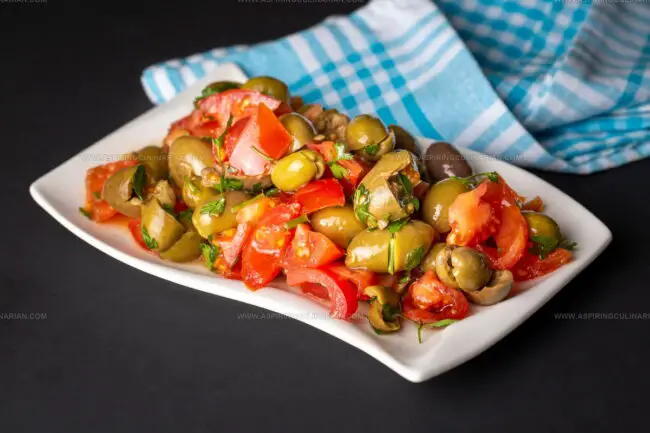
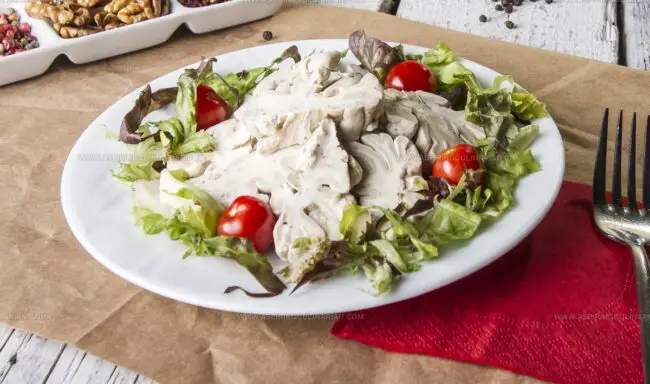
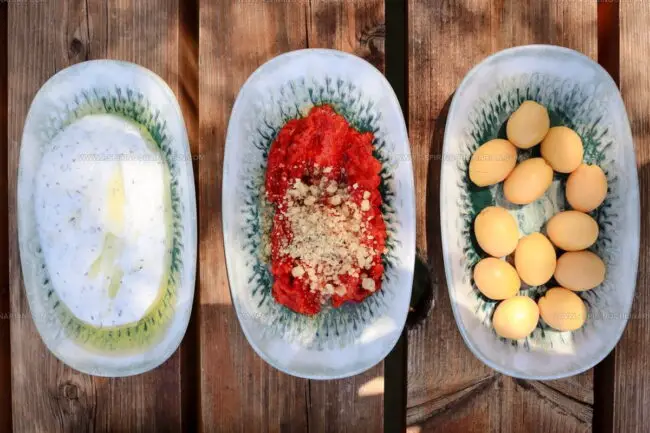
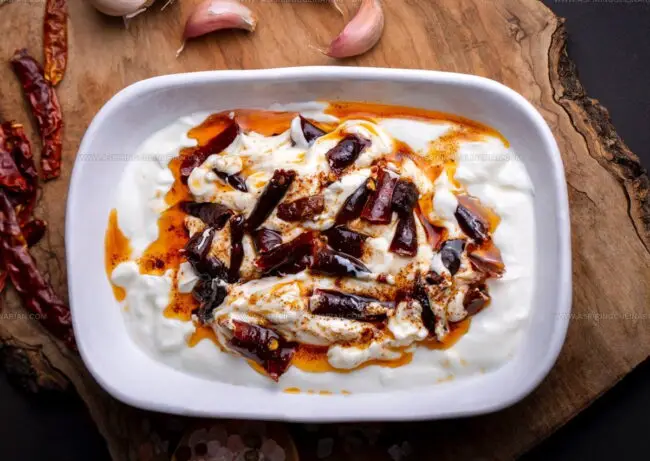
Lena Martinez
Contributing Writer & Culinary Educator
Expertise
Southwestern and Latin American cuisines, Vegetarian and plant-based recipe development, Culinary education and community outreach
Education
Santa Fe Community College, Santa Fe, NM
Certificate in Culinary Arts
Emphasized Southwestern cuisine and sustainable cooking practices
Lena grew up surrounded by the colors, spices, and traditions of the Southwest – flavors that sparked her love for bold, honest cooking. After earning her Culinary Arts certificate at Santa Fe Community College, she made it her mission to teach home cooks how to create flavorful, plant-powered meals without the fuss.
Her recipes are packed with vibrant ingredients, simple steps, and the kind of heart that turns a regular meal into something you’ll want to share. Outside the kitchen, Lena spends her time wandering farmers’ markets, trading family recipes, and helping young chefs find their voice through food.